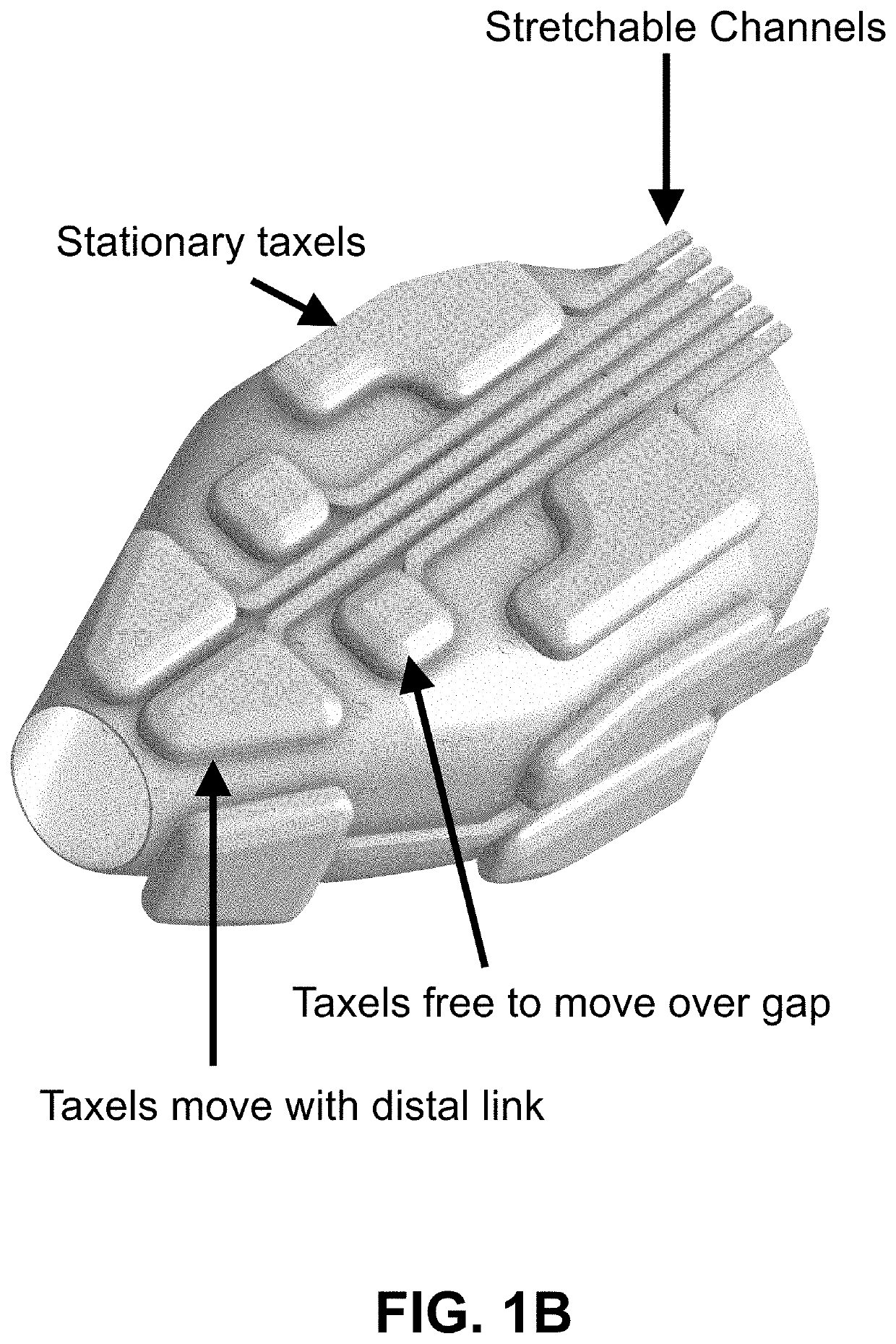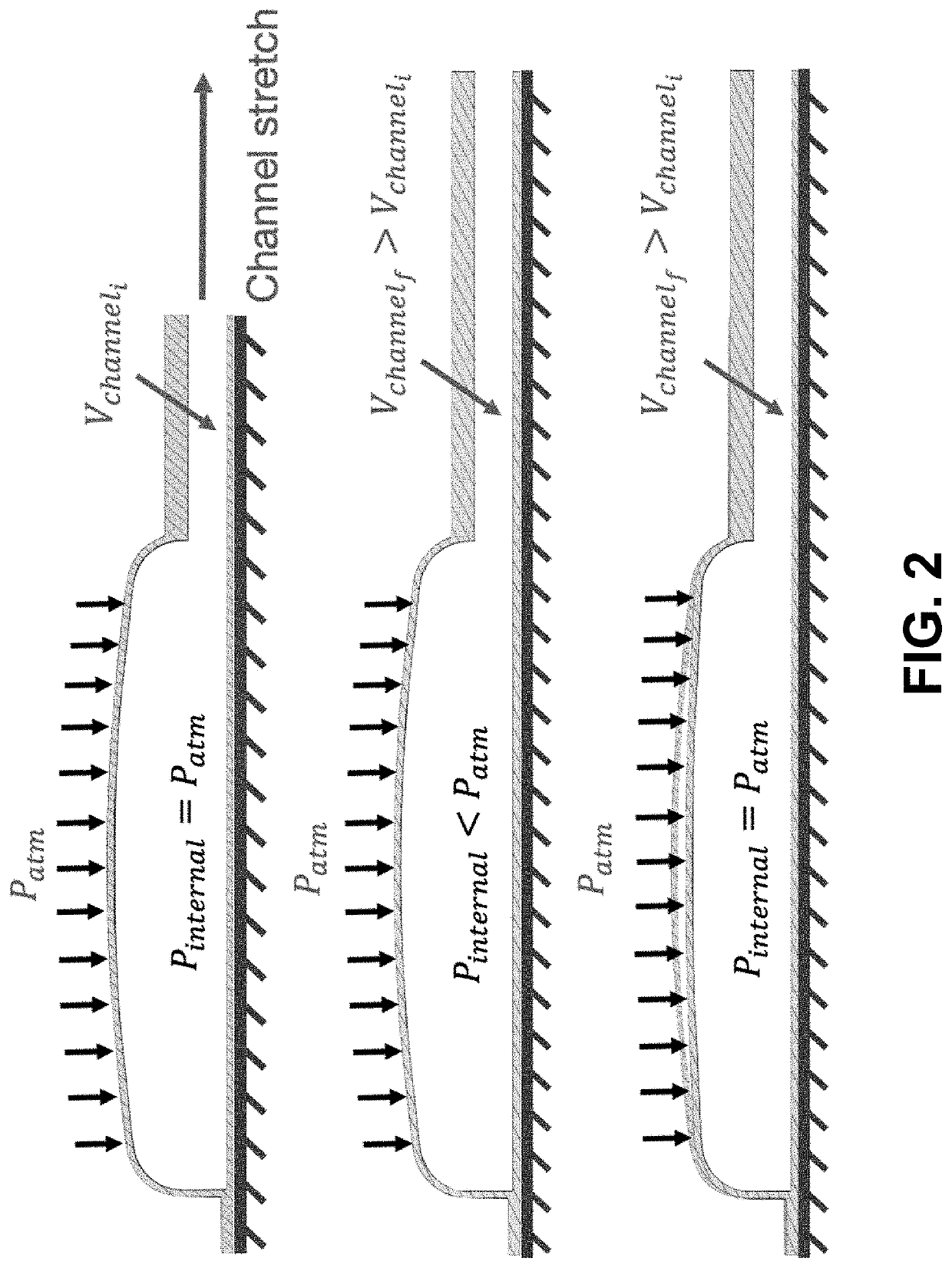Stretchable Tactile Sleeve
- Summary
- Abstract
- Description
- Claims
- Application Information
AI Technical Summary
Benefits of technology
Problems solved by technology
Method used
Image
Examples
Embodiment Construction
[0042]The design of the embodiments of this invention presented herein, there is a fundamental difference with prior approaches in that the sensor skin can be fully soft and stretchable, with rigid chips (in this case barometric) located completely off-board. This is made possible by stretchable channels and a pressure equilibration method that compensates dynamically for channel stretching and flexing. The result is a skin that is durable with respect to stretching and impacts, and can be used with both traditional and soft robots.
[0043]With this approach the channels do not have to be electrical. Pneumatic pressure for both transduction and signal transmission is inherently well suited to soft robots as well as conventional robot arms, especially when there are joint gaps or regions which do not provide a firm substrate. An advantage to using pneumatic taxels with low working pressures (on the order of 0.1 Bar above ambient) is that they are less dependent on having a firm substra...
PUM
 Login to view more
Login to view more Abstract
Description
Claims
Application Information
 Login to view more
Login to view more - R&D Engineer
- R&D Manager
- IP Professional
- Industry Leading Data Capabilities
- Powerful AI technology
- Patent DNA Extraction
Browse by: Latest US Patents, China's latest patents, Technical Efficacy Thesaurus, Application Domain, Technology Topic.
© 2024 PatSnap. All rights reserved.Legal|Privacy policy|Modern Slavery Act Transparency Statement|Sitemap



